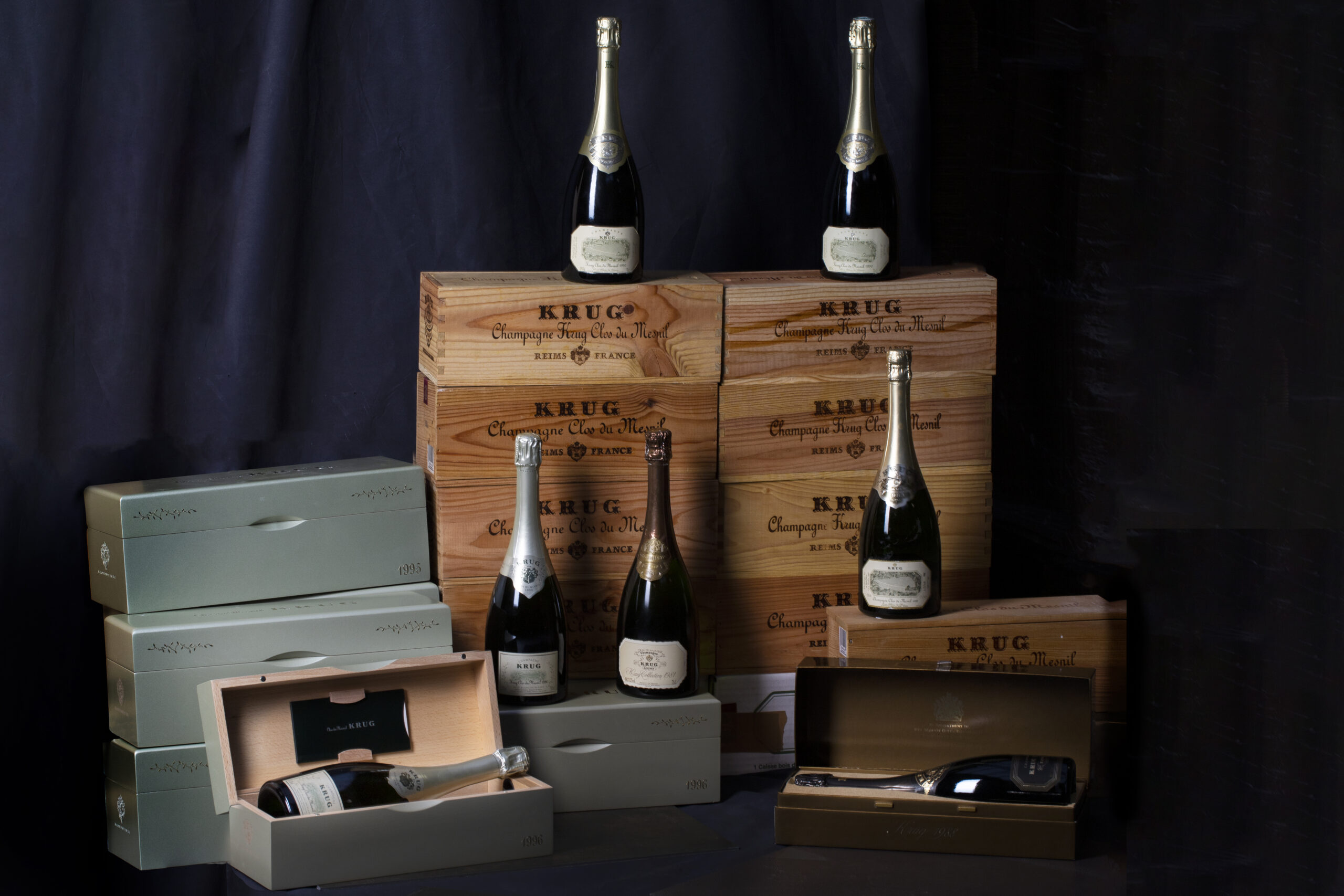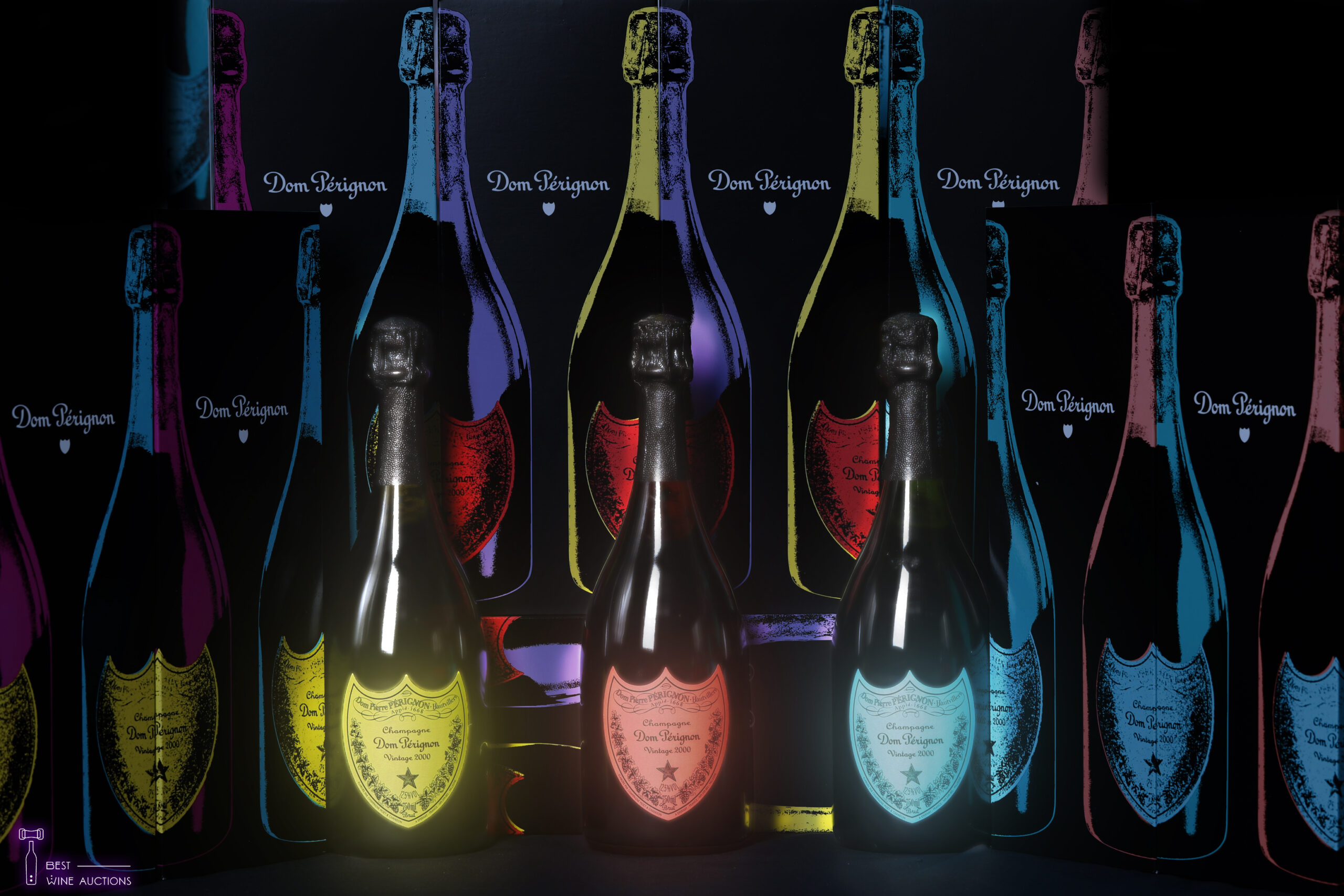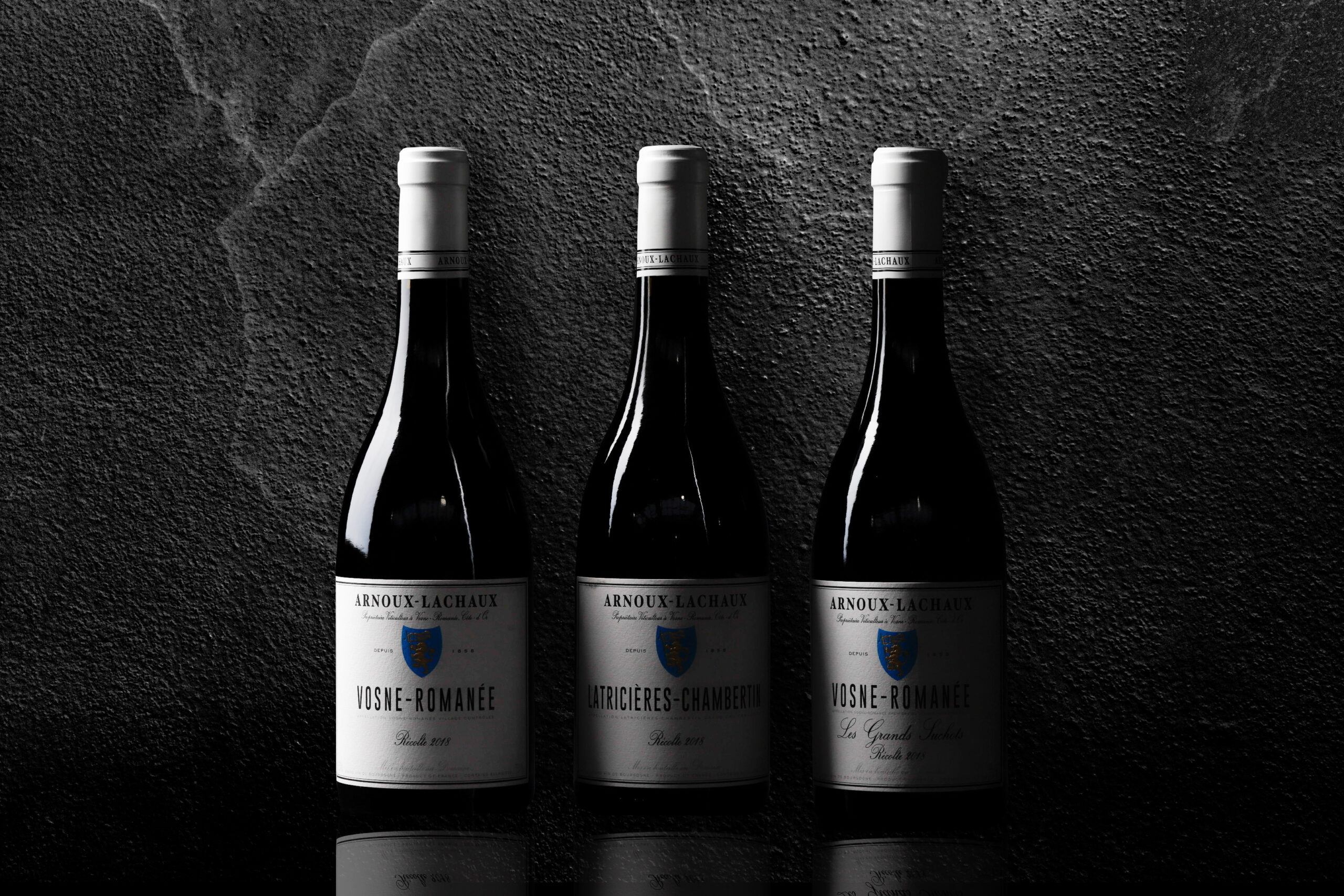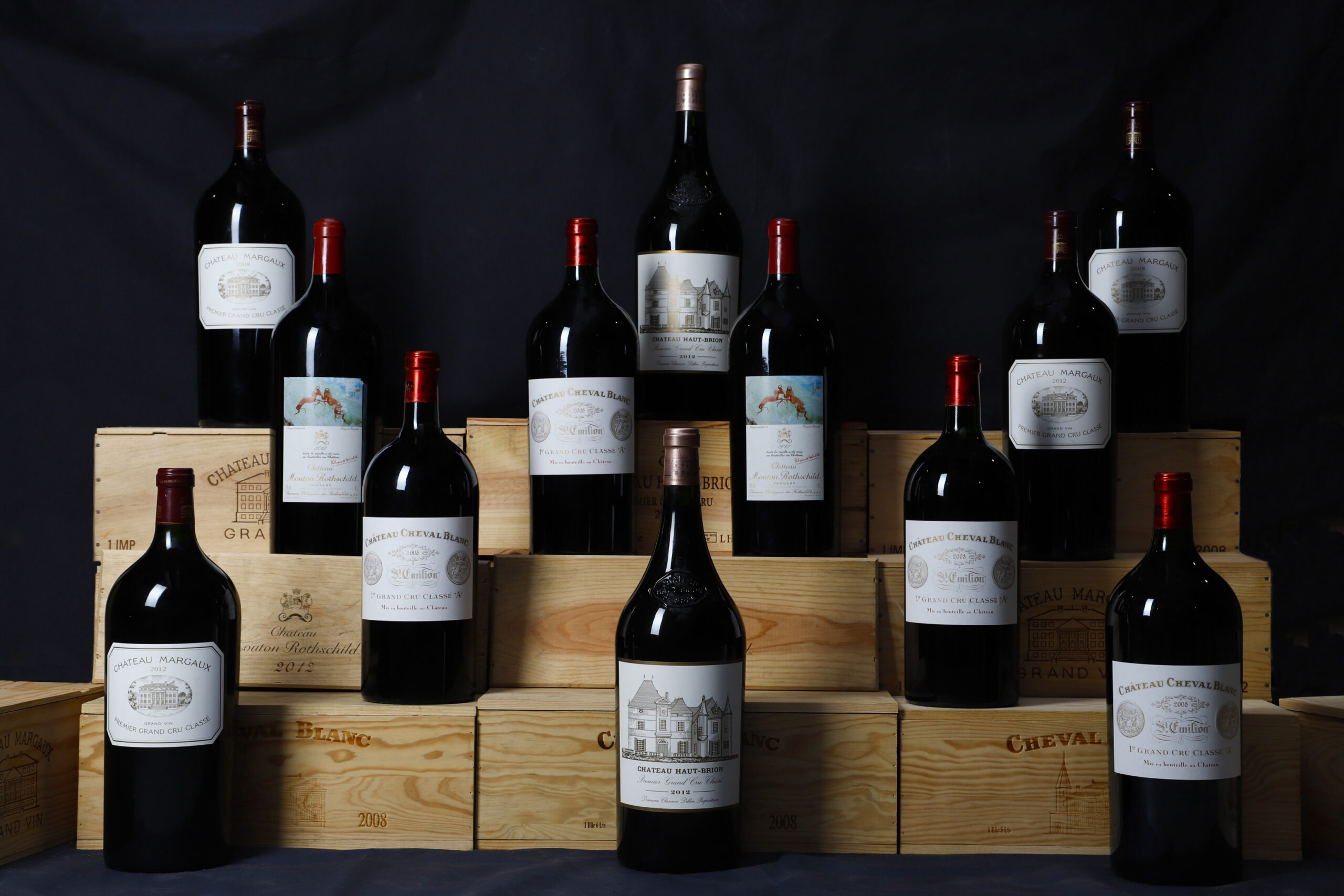Online wine auction platform for the most luxurious wines and champagnes
Wine Auction 25

Krug Champagne,
commonly referred to as simply "Krug," is a prestigious and highly
regarded Champagne house based in Reims, France. Founded by Joseph Krug in
1843, it is known for producing some of the world's finest and most luxurious Champagnes.
Krug Champagne is renowned for its commitment to craftsmanship, quality, and consistency. The house follows a unique philosophy, focusing on creating Champagnes of exceptional character and individuality. One of the key elements that sets Krug apart is its dedication to producing multi-vintage blends. Unlike many other Champagne producers who create non-vintage or vintage Champagnes, Krug carefully selects and blends wines from multiple years to create their signature style.
The flagship Champagne of Krug is the Krug Grande Cuvée. It is a non-vintage Champagne that embodies the house's style and expertise. Krug Grande Cuvée is known for its richness, complexity, and aging potential. It is crafted from a blend of more than 120 different wines, including reserve wines aged for up to 15 years.
In addition to the Krug Grande Cuvée, the house also produces a range of other Champagnes, including vintage Champagnes and special cuvées. These include Krug Vintage, Krug Rosé, and Krug Clos du Mesnil, which is a highly sought-after single-vineyard Champagne made exclusively from Chardonnay grapes.
Krug Champagnes are highly regarded among wine enthusiasts and are often considered a symbol of luxury and celebration. They are known for their remarkable depth, complexity, and ability to age gracefully over many years. Krug Champagnes are typically found in high-end restaurants, fine wine shops, and specialty retailers.

Dom Pérignon is
another esteemed Champagne brand, known for its exceptional quality and
association with luxury. It is named after a Benedictine monk, Dom Pérignon,
who made significant contributions to the production methods of Champagne in
the 17th century. The brand is now owned by Moët & Chandon and produces
vintage Champagnes exclusively.
As for the connection between Dom Pérignon and Andy Warhol, it lies in a limited edition collection of Dom Pérignon bottles that feature artwork by the iconic pop artist. In 2006, Dom Pérignon released a series called "Dom Pérignon by Andy Warhol," paying homage to Warhol's vibrant and avant-garde style.
The collaboration involved the creation of three different bottle designs, each featuring a Warhol-inspired interpretation of the brand's logo. The bottles were decorated with bold colors, including blue, red, and yellow, reflecting Warhol's renowned use of vibrant hues in his artwork.
The Dom Pérignon by Andy Warhol collection was not only a celebration of two influential figures in their respective fields but also a merging of art and Champagne. The limited edition bottles gained significant attention and became sought-after collector's items.
It's important to note that the Dom Pérignon by Andy Warhol collection was a one-time collaboration, and the bottles are now considered rare and valuable.

Arnoux-Lachaux is a
renowned wine producer based in the Burgundy region of France. The estate was
created through the merging of two family-owned wineries: Domaine Robert Arnoux
and Domaine Pascal Lachaux. The union took place in 2009, resulting in the
formation of Domaine Arnoux-Lachaux.
Domaine Arnoux-Lachaux is located in the Côte de Nuits, which is known for producing exceptional red wines from Pinot Noir grapes. The estate's vineyards are spread across some of the most prestigious appellations in Burgundy, including Vosne-Romanée, Romanée-Saint-Vivant, Echézeaux, and Nuits-Saint-Georges.
The wines produced by Arnoux-Lachaux are highly regarded for their finesse, elegance, and expression of terroir. The winery follows traditional winemaking practices, emphasizing careful vineyard management and minimal intervention in the cellar to allow the wines to showcase their unique characteristics.
Some of the notable wines produced by Arnoux-Lachaux include:
Vosne-Romanée: This village-level appellation is famous for producing delicate and refined Pinot Noir wines. Arnoux-Lachaux's Vosne-Romanée wines often exhibit aromas of red fruits, floral notes, and spice, with a silky texture and balanced structure.
Romanée-Saint-Vivant: Considered one of the most prestigious Grand Cru vineyards in Burgundy, Romanée-Saint-Vivant produces wines of great complexity and elegance. Arnoux-Lachaux's expression of Romanée-Saint-Vivant is highly sought-after, offering layers of red and black fruits, floral nuances, and a long, velvety finish.
Echézeaux: Another esteemed Grand Cru vineyard in the Côte de Nuits, Echézeaux yields powerful and structured wines. Arnoux-Lachaux's Echézeaux wines often display rich dark fruit flavors, earthy undertones, and firm tannins.
Nuits-Saint-Georges: This appellation is known for producing robust and age-worthy red wines. Arnoux-Lachaux's Nuits-Saint-Georges wines showcase the intensity of fruit, complexity, and depth that the region is celebrated for.

Bordeaux Grand Cru
imperial collection:
An
"imperial" bottle typically holds 6 liters or the equivalent of 8
standard 750ml bottles. It is also referred to as a "Methuselah" in
Champagne. This larger format bottle is often used for special occasions or
aging wines, as it allows for slower maturation and can enhance the development
of complex flavors and aromas over time.
It's important to note that while Bordeaux wines are not commonly bottled in the imperial size, it is possible for individual producers or estates to release limited editions or special bottlings in larger formats. These can include sizes like magnums (1.5 liters), double magnums (3 liters), jeroboams (5 liters), or even larger formats.
The term "Bordeaux Grand Cru" refers to the highest level of classification for wines produced in the Bordeaux region of France. The classification of Bordeaux wines can vary depending on the specific subregion within Bordeaux.
In the Médoc region, the Bordeaux Wine Official Classification of 1855 is the most renowned classification. It classified several estates into different tiers or "growths" based on their perceived quality at the time. The classification includes five First Growths or Premiers Crus, which are:
- Château Lafite Rothschild (Pauillac)
- Château Latour (Pauillac)
- Château Margaux (Margaux)
- Château Haut-Brion (Pessac-Léognan)
- Château Mouton Rothschild (Pauillac, elevated to First Growth in 1973)
Additionally, the Médoc classification also includes 14 Deuxièmes Crus (Second Growths), 10 Troisièmes Crus (Third Growths), 14 Quatrièmes Crus (Fourth Growths), and 18 Cinquièmes Crus (Fifth Growths).
In the Saint-Émilion region, the classification system is different and is revised approximately every ten years. It designates estates as either Premier Grand Cru Classé A, Premier Grand Cru Classé B, or Grand Cru Classé. The classification includes renowned estates such as Château Ausone, Château Cheval Blanc, Château Angelus, and more.
It's worth noting that there are also other classification systems in Bordeaux, such as the Graves Classification for wines from the Graves and Pessac-Léognan regions, and the Cru Bourgeois classification in the Médoc.
These classifications
are intended to help consumers identify and recognize wines of higher quality
and historical significance within Bordeaux.



